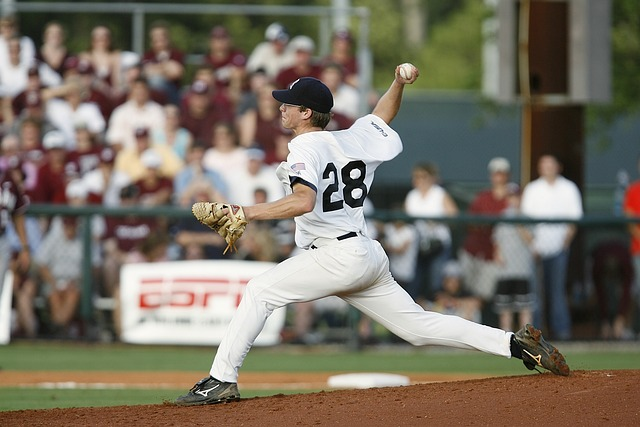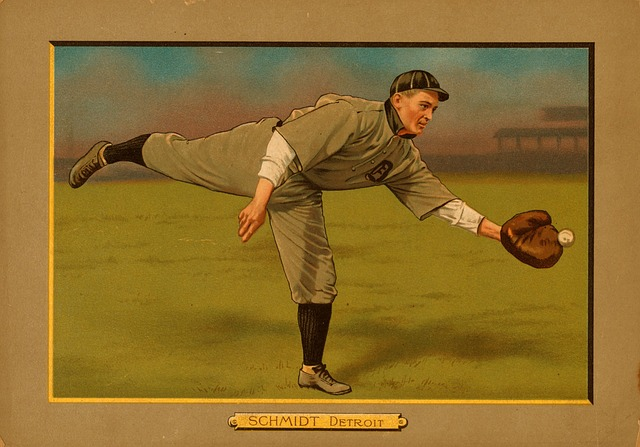
In the world of baseball, there is no shortage of statistics to measure a player's performance. However, few are as crucial and revered as the Earned Run Average (ERA). A pitcher's ERA can make or break their career, determining their value and skill level in the eyes of fans, coaches, and fellow players. This comprehensive guide will explore ERA's significance, how it's calculated, its highs and lows, and alternatives for evaluating pitchers. So step up and join us as we delve into the fascinating world of ERA baseball.
Earned Run Average, or ERA, lies at the heart of evaluating a pitcher's effectiveness in a baseball game. Developed by English-American sportswriter and statistician Henry Chadwick, ERA measures the number of earned runs allowed per nine innings pitched.
It's a crucial stat that has shaped the careers of countless pitchers and played a significant role during the live-ball era, when hitters found greater success at the plate, resulting in more runs being scored.
ERA stands for Earned Run Average, a statistic that quantifies a pitcher's effectiveness in terms of limiting runs. It is designed to appraise pitchers, especially with the increased use of relief pitchers in the game since the early 1900s. Henry Chadwick, the creator of ERA, also devised the box score as a baseball scorekeeping method, developed the abbreviation "K" for strikeouts, and invented the batting average statistic.
In Major League Baseball, the National League and American League have their own distinct ERA averages. National League pitchers have an advantage in their ERA, as pitchers generally do not accumulate as many runs for their team compared to other players in the lineup. The importance of ERA in baseball cannot be overstated, as it is used to establish pitching records and awards.
ERA serves as a critical barometer for a pitcher's performance, providing a ballpark figure for their ability to prevent opposing teams from scoring. A lower ERA indicates a more effective pitcher, while a higher ERA suggests that the pitcher is struggling to keep the other team's hitters at bay. In the National League, pitchers have an ERA advantage due to their role in the batting lineup, generally accumulating fewer runs for their team compared to other players.
However, ERA is not a perfect metric. Critics argue that it fails to account for factors such as defense and ballpark effects, which can significantly influence a pitcher's ERA. As a result, alternative metrics like WHIP, FIP, and xFIP have emerged to provide a more comprehensive evaluation of a pitcher's performance.

To calculate a pitcher's ERA, the number of earned runs allowed is divided by the number of innings pitched, and the result is then multiplied by nine to represent a complete game.
This calculation provides a standardized metric that can be used to compare pitchers and assess their effectiveness in preventing runs from being scored.
Calculating ERA is a straightforward process. First, calculate the total number of innings pitched by a pitcher. Then, divide the total number of earned runs allowed by the calculated number of innings pitched. Next, multiply the result by nine to account for a complete nine-inning game. The final figure, typically expressed as a whole number with two decimal places, represents the pitcher's ERA.
It's important to distinguish between earned and unearned runs when calculating ERA. Earned runs are those scored without the assistance of an error or a passed ball, while unearned runs occur due to an error or a passed ball. By considering only earned runs, ERA provides a more accurate representation of a pitcher's true effectiveness.
Let's consider an example to illustrate ERA calculation. If a pitcher has allowed 40 earned runs in 100 innings pitched, their ERA would be calculated as follows: (40 earned runs / 100 innings pitched) x 9 = 3.60 ERA.
This figure provides a snapshot of the pitcher's effectiveness in limiting runs scored by the opposing team.

When calculating ERA, it's crucial to differentiate between earned and unearned runs. Earned runs are attributed to the pitcher's performance, while unearned runs result from defensive plays or passed balls.
Including only earned runs in the ERA calculation helps account for the impact of team defense on a pitcher's performance, providing a more accurate assessment of their ability to prevent runs from being scored.
An earned run is any run scored against a pitcher without the assistance of an error or a passed ball. In other words, the pitcher is directly responsible for these runs. Earned runs are an essential component of the ERA calculation because they reflect the pitcher's ability to limit the opposing team's scoring opportunities.
Unearned runs, on the other hand, are runs that result from errors or passed balls committed by the defense. These runs are not directly attributed to the pitcher, as they are considered the responsibility of the team's defense.
By excluding unearned runs from the ERA calculation, the statistic provides a more accurate reflection of a pitcher's true ability to prevent runs from being scored.
Interpreting ERA scores involves understanding the implications of high, low, and average ERAs. A lower ERA is generally considered more desirable, as it indicates that fewer runs have been scored against the pitcher.
Conversely, a high ERA suggests that the pitcher has struggled to prevent the opposing team from scoring, potentially impacting their team or relief pitcher's chances of winning games.
A low ERA signifies that a pitcher is effectively limiting the number of runs scored by the opposing team. With fewer runs scored against them, the pitcher's team has a better chance of winning games.
In contrast, a high ERA implies that the pitcher's team may need to score more runs to secure a victory, as the pitcher has allowed more runs to be scored against them.
A Major League Baseball player's ERA between 4.00 and 5.00 is usually considered average. This result is typical for most players in the major league baseball history. However, this range may vary depending on the era of baseball being played.
A high ERA, such as one above 5.00, is generally viewed as a sign of a struggling pitcher. It indicates that more runs have been scored against the pitcher, suggesting that they have not been as effective in limiting the opposing team's scoring opportunities.

Throughout baseball history, there have been several remarkable ERA records and milestones achieved by pitchers. These records serve as a testament to the incredible talent and dedication of those players who have managed to excel in their craft and etch their names in the annals of baseball history.

Tim Keefe holds the record for the lowest single-season ERA in MLB history with an astonishing 0.86 in 1880. In terms of career records, Ed Walsh boasts the lowest career ERA in MLB history with an impressive 1.816.
These remarkable achievements stand as a testament to the exceptional skill and perseverance of these pitchers in the face of intense competition.
When I glance across the baseball field, I'm reminded of how this pitching statistic offers a unique lens to appreciate the game. The ERA indicates the average number of runs a given pitcher allows per nine innings. While many believe that a lower ERA reflects a good pitcher, factors such as bad defense or decisions by the official scorer can sometimes inflate this number. A pitcher’s fault doesn’t always translate to their ERA, especially if a batter reaches base as a result of an error and later scores. This makes the ERA calculator an average calculator that accounts for total runs in total innings, excluding runs that resulted from defensive errors.
Among the major league pitcher ranks, several names stand out when discussing the best pitchers and ERA. Mariano Rivera, known for his prowess on the mound, has had a remarkable career, but even he would admit that the defense behind him played a crucial role in his ERA. Then there's Zack Greinke, a staple for the Houston Astros, whose consistency continues to astonish me. Greg Maddux, Randy Johnson, and Dutch Leonard, while from different eras, all set significant benchmarks in the world of pitching. Yet, the modern record for the single-season ERA of an active pitcher brings us to names like Johan Santana and Madison Bumgarner. Amidst all these pitching legends, Coors Field, home to the Colorado Rockies, is notorious for being a paradise for home runs, sometimes making it challenging for pitchers to maintain a league average ERA.
Of course, historical eras of baseball have seen their own set of legends. Babe Ruth, primarily known for his home runs with the Boston Red Sox and later the New York Yankees, also pitched, and impressively so! The Los Angeles Dodgers have been graced by the likes of Clayton Kershaw, while the Detroit Tigers can boast about the times of Christy Mathewson. Meanwhile, Rollie Fingers and Lefty Grove left indelible marks with their performances on the mound. Every time a batter approaches home plate, a new possibility arises. While the debate on who holds the best season or career record will persist, for me, the joy of baseball lies in the blend of strategy, athleticism, and unexpected moments that make each game a unique spectacle.
Bob Gibson, a Hall of Fame pitcher for the St. Louis Cardinals, is often celebrated for his remarkable 1968 season, which is commonly referred to as the "Year of the Pitcher." In that season, Gibson set an astonishing modern-era record for the lowest single-season Earned Run Average (ERA) with a mind-boggling 1.12. Over 34 starts, he pitched 304.2 innings, demonstrating not just efficiency but also incredible stamina. To add to his phenomenal year, Gibson also recorded 13 shutouts. His unparalleled dominance on the mound that season is frequently cited as a major reason for Major League Baseball's decision to lower the pitcher's mound from 15 inches to 10 inches the following year. The aim was to give hitters a more level playing field against pitchers, a testament to the overwhelming prowess Gibson showcased that season.
When comparing ERA for a starting pitcher and relief pitchers, it's important to consider the differences in their roles and responsibilities on the field. Starters typically pitch more innings per game and must pace themselves to maintain their performance throughout the game.
In contrast, relievers generally pitch fewer innings but can throw harder against hitters, as they are not required to conserve their energy for multiple innings.
Starting pitchers have a significant impact on their ERA due to the increased number of innings they pitch. As a result, their ability to pace themselves and maintain their stamina throughout the game is crucial for their success.
The more innings a starter pitches, the greater influence they have on their ERA, making their performance an essential factor in determining the outcome of a game.
Relief pitchers often enjoy an ERA advantage over starters because they typically pitch fewer innings, creating fewer opportunities for the opposing team to score runs. As a result, their ERA scores may appear more favorable than those of starting pitchers, who are required to pitch more innings per game.
Bill James, a prominent baseball statistician, explains that the ERA advantage for relievers stems from the fact that they often begin their work with one or two outs already recorded in the inning.
While ERA is a widely recognized and respected statistic in baseball, it is not without its limitations. Critics argue that it fails to account for factors such as the quality of a team's defense and the impact of ballpark effects on a pitcher's performance.
In response to these concerns, alternative metrics have been developed to provide a more comprehensive evaluation of a pitcher's abilities.
One major criticism of ERA is its inability to account for the difference between an average defense and an exceptional one. As a result, an average pitcher with an outstanding defense behind them may have an ERA that suggests they are as talented as a superior pitcher with a less capable defense. To address this issue, sabermetric researchers have developed defense-independent pitching statistics, such as dERA and DICE, that aim to provide a more accurate assessment of a pitcher's performance.
Another limitation of ERA is its tendency to favor relief pitchers or those with shorter appearances, as it only considers earned runs allowed per nine innings pitched. This can result in misleading comparisons between starting pitchers, who are required to pitch more innings per game, and relievers, who typically pitch fewer innings.
In light of ERA's limitations, alternative metrics such as WHIP (Walks and Hits per Inning Pitched), K-BB% (Strikeout-to-Walk Percentage), and FIP (Fielding Independent Pitching) have emerged as valuable tools for evaluating pitchers. These metrics aim to measure a pitcher's performance without accounting for the impact of defense, providing a more comprehensive and accurate assessment of their abilities.
By focusing on a pitcher's individual performance, these metrics can provide a more accurate picture of their abilities than ERA. They can also be used to compare pitchers across different eras, as they are not affected by changes in the game or the defense behind them. This makes them invaluable for evaluating pitchers in any era.
In conclusion, ERA is an essential statistic for evaluating pitchers in baseball. It provides valuable insights into a pitcher's ability to prevent runs from being scored, serving as a key determinant of their success on the field. However, it is important to recognize the limitations of ERA and consider alternative metrics when assessing a pitcher's performance. By understanding the nuances of ERA and its alternatives, fans, coaches, and players alike can gain a more accurate and comprehensive understanding of a pitcher's true prowess on the mound. So keep an eye on those ERA scores and enjoy the thrill of the game!
Generally, an ERA between 4.00 and 5.00 is seen as good in Major League Baseball, although it can vary based on the pitching rules, ballpark dimensions, and the ability of the pitcher. A lower ERA is always desired, but many pitchers strive to stay within this range.
ERA in baseball is an important statistic for evaluating pitchers. It is the average number of earned runs given up by a pitcher per nine innings pitched and takes into account any runners on base that may score. ERA gives an accurate representation of how successful a pitcher is in avoiding giving up runs to their opponents.
A pitcher with a 0 ERA has not yet pitched in a game, or has not allowed a run during their outings and therefore has no earned runs. This means that the pitcher has successfully kept the opposing team from scoring so far.
ERA per 9 innings is a useful tool to analyze pitchers, as it helps us compare the effectiveness of pitchers in terms of the number of runs allowed over the course of an entire game. By calculating ERA per 9 innings, we are able to gain insight into a pitcher's overall ability.
The pitcher with the lowest career ERA in MLB history is Ed Walsh, with an ERA of 1.816. Walsh pitched from 1904 to 1917 for the Chicago White Sox, and he was one of the most dominant pitchers of his era. He won 195 games in his career, and he struck out over 3,000 batters. Walsh was also a very good hitter, and he batted over .200 in his career. Walsh's ERA is even more impressive when you consider the era in which he pitched. The early 1900s were a high-scoring era, and the average ERA was over 3.00. Walsh's ability to keep the ball in the park was truly remarkable. Walsh was inducted into the National Baseball Hall of Fame in 1946. He is considered to be one of the greatest pitchers of all time.
Clayton Kershaw's career ERA is 2.48. This is the lowest career ERA among starters in the live-ball era (minimum 1,000 innings pitched). Kershaw has won five ERA titles in his career, and he has been named to the All-Star team ten times. He is also a three-time National League Cy Young Award winner. Kershaw is one of the most dominant pitchers of his era, and he is widely considered to be one of the greatest pitchers of all time. His career ERA is a testament to his skill and consistency.
Madison Bumgarner has the best World Series ERA of all time, with an ERA of 0.25. Bumgarner pitched for the San Francisco Giants in four World Series, and he won three of them. He was named the World Series MVP in 2014, when he had a record three wins and an ERA of 0.43. Bumgarner was known for his big-game performances, and he always seemed to be at his best in the World Series. He was also a very good hitter, and he hit two home runs in the 2014 World Series.
Chris Sloan is a former baseball league commissioner and travel baseball coach who has made significant contributions to the sport. In 2018, he founded selectbaseballteams.com, a website that helps parents find youth and travel baseball teams in their local areas. Since its launch, the website has experienced impressive growth, offering a wealth of resources including teams, news, tournaments, and organizations. Chris's unwavering passion for baseball and his innovative approach to connecting parents with quality baseball programs have earned him a respected reputation in the baseball community, solidifying his legacy as a leading figure in the world of youth and travel baseball.
There are 0 comments on "Earned Run Average (ERA): Everything You Need to Know"
chandler allen says:
"Hi my name is chandler, i’ve enjoyed..."
On Wanting to tryout for summer ball. as an 18 year old
david graham says:
"With no current MLB team in Canada,..."
On With no current MLB team in
Charles Chavez says:
"To All Coaches: Do you have13U or..."
On Looking for Games